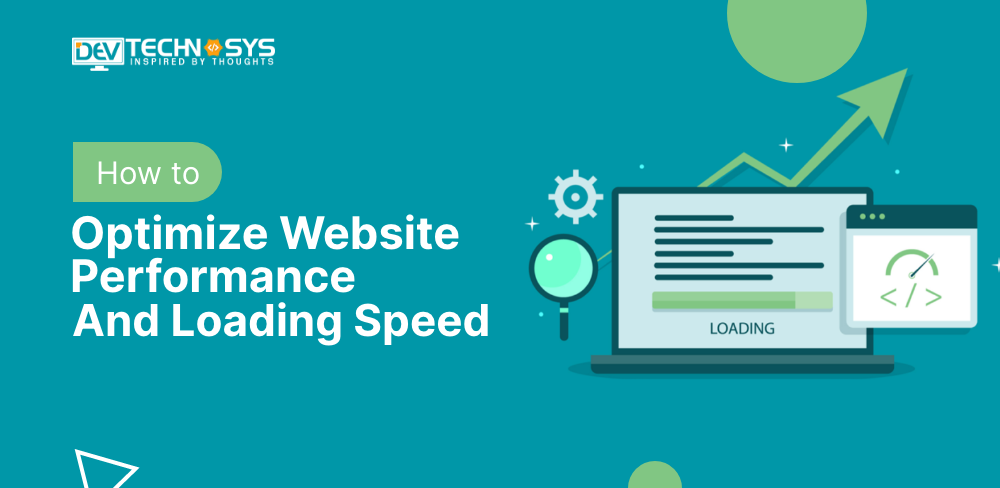You are at right place if you are looking to optimize website performance and loading speed.
Page speed is important! The bounce rate, search performance, user experience, and income all suffer from sluggish page loads. Google has been using site speed as a ranking factor for years. Google’s patent for site speed was granted on 4 February 2014. In 2018, Google’s Speed Update added mobile page loading speed to the ranking factors.
The top search engine will have finished making the switch to mobile-first indexing by March 2021. So it’s more crucial than ever that you pay attention to how quickly your mobile sites load and how you can optimize website performance.
Numerous marketing and SEO criteria favor faster-loading websites. Regardless of what metrics you include, such as organic search results, site engagement, conversion rate, bounce rate, abandonment, or loyalty.
According to research conducted by Google and Deloitte, increasing page loading time by just 0.1 seconds could increase your conversion rate by up to 8%. Google conducted another study that revealed 53% abandon mobile sites with a delay of more than three seconds.
In the study, faster mobile sites had session averages that were 70 percent longer than slower sites and bounce rates of 35 percent lower. Faster mobile sites generated almost twice as much revenue as slower sites.
When it comes to optimizing website performance, faster page loading time can have a significant impact on the site, including increased page views, conversion rates, and revenue. In this blog, we will discuss how you can optimize website performance. We will also explore page speed, testing tools, etc.
So let’s begin.
What is Page Speed?

The “page speed” is the rate at which your content loads. The faster the content loads, then the quicker the page speed. It’s important to realize that page speed is a concept that’s a bit broader because it’s hard to define the speed at which your website loads.
We should not compare the speed of a website to that of a car when discussing web page performance. You can refer to a car that can reach 100km/h as its speed. When talking about page speeds, it’s not just “this page loads within 4 seconds”. Page speed is a part of your users’ experience when they interact with your website. So it is vital to optimize website performance timely.
What Affects the Speed of a Website?
Your site’s load time could be slow for a variety of reasons. There are many factors that can cause your site to lag. You need to identify them and make sure to optimize website performance.
- Use of heavy CSS and JavaScript
- Poor server/hosting plan
- Large image sizes
- Browser cache is not used
- Too many widgets or plugins
- Images and other resources can be linked to from slow servers
- Traffic volume
- Older browsers
- Slow network connection (mobile devices)
There are a number of ways to improve page speed. Before you begin troubleshooting your website to improve performance, it is important to test the page load time.
Why Is Page Speed So Important?
Research shows users will lose focus if they wait more than 0.3 seconds. If it takes your website longer to display important information than this, users will lose their focus and may close the browser. Websites with faster loading times will have lower bounce rates, higher conversion rates, higher rankings in organic search, and, of course, a better overall user experience.
Slow websites cost you money, and they will damage your brand. So proper website performance optimization is a must for better user retention. Making your website pages load faster can have a positive impact on traffic, user retention, and sales.
How to Test Your Website’s Speed?
Find out how quickly your site is currently loading and what is initially causing it to load slowly. Next, you need to set performance goals for your website to quickly optimize website performance. In 2018, the recommended page load time was under 3 seconds. Google’s research into the average mobile speeds across industries shows that only a small fraction of websites are close to their recommended page load time.
If you can optimize website performance to a level that is acceptable, you’ll gain a ranking advantage. This article lists several ways to optimize your website’s speed. However, each method is different. Sometimes the solution for one problem may have an adverse impact on another part of your site. We recommend that you analyze the speed of your website after every change. This will help you determine which actions produce the best results.
You can try out several tools to evaluate your performance:
- Google Pagespeed Insights is a free tool that evaluates the performance of your website and offers suggestions for improvements. Both desktop and mobile versions of the utility are functional.
- Pingdom has a variety of features that make it a useful tool for testing website speed. It records your website’s performance history, provides data-driven suggestions on how to increase the speed of your website, and produces easy-to-understand reports. Pingdom offers apps for Android and iOS that test website speed. There are paid and unpaid monitoring programmes available.
- YSlow provides statistics and summaries of all components. It also offers recommendations for improving the performance of a page.
- The Performance Budget Calculator, a free tool, helps you determine what kind of content to use on your website in order to maintain its optimal performance.
Different Speed Testing Tools
You are now aware of the necessity to optimize website performance for speed. Here is a brief overview of the commonly used performance benchmarking tools.
1. Your Own Browser
Your browser does have a tool that can tell you the speed at which your website loads. It is a great tool to find out the number of files that are loaded on every page request (scripts, stylesheets).
Click on the Network tab in the Developer’s Tools of your browser. You can see detailed statistics about loading speed if you reload the page with the cache disabled.
This method is only limited, as it tests loading speeds from your location. We know that speeds vary at different locations around the world.
2. Pingdom Tools
Choose multiple locations to test the speed of your website. Additionally, you will get a thorough report with suggestions for more optimisation. However, if your website has some technical issue that is making the loading time slow, then it would be better to hire web developers.
3. Page Speed Insights
Page Speed Insights has created the idea that a 100-point score is essential for SEO. It’s not entirely true because many of the most popular sites have scores below 70. Page speed insights use Lighthouse to analyze websites, which is not directly related to SEO.
A free and open-source website performance analysis tool is called Lighthouse. It checks the website’s performance, accessibility, SEO, and progressive web apps. Lighthouse can be downloaded as a browser package or an NPM extension if you’re developing a local website. Other tools do not report some of the important details that this tool does. You can optimize website performance by reducing the page size and optimizing the loading speed.
4. GTmetrix
This service is much more accurate for me than any other. It provides accurate information about the speed at which your website loads. It provides a thorough analysis of the best practices that can enhance the functionality of your site.
How Can You Optimize Website Performance and Loading Speed?
It’s time to improve this and optimize website performance. Now that you know the importance of page load speed and how to measure your site’s performance, it’s now time to get to work. If you are a newbie, it is advisable to take help from a web development company. Let’s look at easy ways to speed up your website.
1. Use a Host or Configure a Quick Infrastructure
The right infrastructure is the first step to achieving page speed. Ensure that your web stack is built for speed. Host your website on a high-performance, dedicated server. Shared servers can cause your website to slow down, even if it has an optimized design and code. Be sure to use the latest technology. Ensure caching is optimized.
2. Use a CDN
Do you want to learn how to improve the loading speed of web pages? Reduce the distance between your server and the end user over which information must travel. Yes, it makes sense. A CDN is an easy method to accomplish this. A geographically scattered set of servers, commonly referred to as POPs, is a content delivery network. Together, they work to speed up the delivery of your web content. A CDN can increase the speed of your website, regardless if it uses HTML, JavaScript or stylesheets.
3. Compress Files Using Gzip
GZip, a server-side compression method, reduces the time it takes to load a page. It takes data and compresses it to make it more efficient for delivery. Gzip compresses your HTML files, stylesheets and JavaScript. Images and videos are not affected by this compression since they have already been compressed separately. The good news is that GZip compression is enabled by default on most large CDNs, so as long as your website uses a CDN, you’re probably covered.
4. Reduce HTTP Requests
One of the most efficient ways to speed up page loading is to decrease the amount of HTTP requests that a website makes. When someone visits a website, the browser makes a request for the necessary files.
The browser renders the page’s content when the server returns the requested files. Each file that makes up the content of a page is sent as a separate HTTP Request by the browser. The number of HTTP requests increases, and page loading times increase with the number of files on a page.
5. Minimize CSS and JavaScript
The next tip to optimize website performance is to minimize CSS. Minifying JavaScript and CSS is another effective way to reduce page loading time. The process of minification involves removing all unnecessary characters and comments from the code and using shorter variables and function names. The less data you have in your code, then the faster and easier it is to load a page.
6. Streamline your HTML
To increase the speed of your site, you should streamline your HTML code. It increases the amount of data transferred to users. Bloated HTML can also affect JavaScript performance if you manipulate the DOM. Bloated HTML is when your HTML pages have 5,000 or even 6,000 lines of code before any content.
7. Images Optimized for Faster Page Loading
What is the main cause of slow websites? Images! Images! Some websites have images larger than 1MB, and others even bigger than 5MB. Yikes! Do not do that. The size of your image files can slow down the speed of your landing page and make visitors wait (often out in frustration).
Don’t compromise image quality when you optimize your photographs. You want smaller image files, but you don’t want a website that looks amateurish. Numerous WordPress plugins for image optimisation are available. TinyPNG is our favorite. With this tool, we reduced the size of all images on Terakeet’s website by 48%.
8. Media Library Cleaning
It’s likely that over time your media library will have become cluttered with old or unused pictures. It will only clog up your website. To speed up website load times, purge your media library of any unused photos or media assets.
9. Cleaning Up your Database
Like your media library, over time, your database may become bloated with useless information such as photos and files. Database optimization is a process that identifies and eliminates garbage data and unused contents from your database. This helps your hosting server retrieve requested information faster and helps to optimize website performance.
10. Remove Render-blocking JavaScript
Scripts are called when your pages load. This is often done at another URL. This queue of scripts must be finished and cleared before the page can be viewed by the user. These queues can be a major roadblock since the JavaScript files that block rendering are slow to load and take a long time.
Web browsers will load resources by default in the order in which they appear in HTML. When the resources are large and require a lot of computing power on the device of the user, this can lead to a delay in visual rendering. Many of these scripts, however, are not required to view the page at first. It is often fine to let these scripts run after a page has been loaded.
11. Use the Expires Header
The Expires headers assist in speeding up the loading of your website. They tell the browser whether to pull a file directly from the server or from its cache.
It reduces both the number and size of HTTP requests as well as downloads. This will speed up the loading time of the website.
Many modern websites have multiple files on each page. The size of the file, especially large files, can add to load time. Each file must be transmitted to the server. This adds additional time.
Expires headers tell the browser for how long it should store a particular file on your Mac or other device. This allows future visits by the same computer to bypass any new HTTP requests and downloads.
12. Avoid URL Redirects
A URL redirect is a method or instruction that takes the user automatically from one URL to another. A redirect can be implemented in different ways. A forwarding page’s SEO value is maintained via the 301 redirect technique. Regardless of the type, this process slows your page down because it takes time for the file to move from one to the other. Avoid or minimize URL redirects as much as possible.
Conclusion
It cannot be easy to improve and optimize website performance, given the wide range of devices, connectivity, operating systems, and browsers. But it will make a positive difference for your business if you rely on your website to reach your customers.
Remember that this is not a process with a clear start or end. It’s not necessary to implement every change suggested today. Make changes to the website and compare performance before and afterward. However, you can even take help from reputed professionals or hire dedicated developers who can optimize website performance and speed.
FAQ
What Causes a Website to Be Slow?
The most common problem is a large number of images that are not optimized. Image optimization is essential to a successful SEO strategy because optimized images will rank higher in Google image searches. This will improve the overall search engine optimization of your website. Remember that image optimization’s sole goal is to make your pages lighter by reducing the load time and network resources. It also saves data for mobile users with limited data plans. There are many tools on the web that can help reduce image size.
What is the Impact of Website Speed on SEO?
It is closely connected to several SEO growth factors, such as bounce rates, conversion rates, and overall experience. The bounce rate is the percentage of users who enter your website and leave it almost instantly rather than staying to see more pages. Search engine rankings will be affected by pages with higher bounce rates.
How Can I Test the Speed of My Site?
The time it takes a web browser to load a page from your site serves as the benchmark. The page speed may be measured using the methods mentioned in this blog. The simplest method to accomplish this is using Google PageSpeed Insights.
Why is Website Speed Optimization Important?
This is an important ranking factor that can help you achieve better search results and conversion rates, as well as a lower bounce rate. Optimize website performance which can improve its search engine optimization. Webmasters define success as better speed in many different ways.























